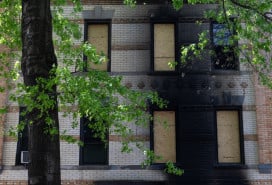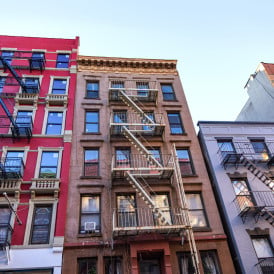How to manage change orders for your NYC renovation to keep costs down

If you choose a bid that lacks detail and clear planning (but it was the lowest bid you got), then chances are high that you’re going to end up paying more and more as decisions get made on the fly.
Why do remodeling projects go over budget so often? The answer varies, but often it’s due to the “upsell trap.” Once you start remodeling your home, you get excited by the possibilities and sobered by the fact that you’re making decisions about fixtures and finishes that you’ll have to live with for years to come.
Unfortunately, these incremental costs add up, fast.
So, what can you do to combat the rising tide of extra costs? The most obvious answer is to create a budget and stick to it as best you can. If you don’t at least have a starting point for the amount you’d like to spend, it’s easy to go astronomically over budget, very fast.
Secondly, avoid scope creep—the result of accepting a bid that isn’t properly detailed and planned out. If you choose a bid that lacks detail and clear planning (but it was the lowest bid you got), then chances are high that you’re going to end up paying more and more as decisions get made on the fly.
But perhaps the most important step to staying on budget during your renovation is to properly manage and track your change orders.
With more than 50,000 square feet renovated in NYC, Bolster understands how to guide New Yorkers through any renovation challenge, from navigating Landmarks to recreating pre-war details, and gives them full visibility into project milestones. "Bolster is the only renovation firm to offer a fixed-price cost up-front. Once we perform due diligence and verify the existing conditions of your property, we absorb unforeseen project costs," says Bolster's CEO and co-founder Anna Karp. Ready to start your renovation? Learn more >>

A change order means more than just signing a piece of paper and paying a bit more for different tiles. If you keep changing your mind, it also means time wasted sourcing the materials, as well as money spent buying, storing, and then returning the originals.
Think of it like this: When you shop for shoes and return them, it costs you nothing. But with remodeling, there may be tearing out existing tile and ordering new materials, plus storage and administration—in other words, the actual process of changing your mind is costing you money.
Change orders are unavoidable. They are key to making down-the-road changes that you didn’t or couldn’t have known about in advance. Maybe you didn’t make up your mind, or you changed your mind, or maybe the building has a hidden defect that no one could see until you knocked down a wall.
Whatever the reason, you’re going to have to deviate from your original plan—meaning more time, and, most likely, more money.
Here are the guidelines for making change orders as painless as possible—and for knowing the difference between change orders and changing the deal.

Plan everything you can—down to the smallest detail—in advance
The biggest rule of change orders? When possible, it’s best to avoid them. As mentioned previously, they cost time and money, and create a likely source of conflict between you and your contractor (it’s easy to get into disagreements over whether a change order comes as a result of you changing your mind, or the contractor having a different understanding of your project). The best way to avoid this situation is to plan, plan, plan.
At the outset, be sure to get bids from up to three contractors
It may seem like a lot of time spent, but meeting with a host of contractors is the best way to get as much insight into the details of your project as possible. Each contractor will bring his/her knowledge, perspective, and experience to the table. Multiple meetings mean varied opinions and knowledge bases—you can learn from each one and compound the information into a comprehensive plan. Then, when you finally choose a contractor, you’ll be in a good position to point out details they may have missed (plus you’ll look well informed)—meaning you’re less likely to end up with changes later on.
Engage an architect and/or engineer
If you’re doing a big project that involves structural changes—say, moving a roof or adding an addition—an architect or engineer will pick up on potential problems that you and your contractor will miss. Their expertise can be invaluable—they’ll be the ones who can determine exactly how you can get the project done.
Consider doing some poking around
Unfortunately, you can’t X-ray a house to determine what’s behind the walls or under the floors. But you can drill some trial holes. It’s typically carried out by surveyors and will help you figure out whether a wall can in fact be moved, or a floor opened, without bringing down your house. Granted, it may cost you some cash up front—but consider how much it will cost if you commence building an addition only to discover poor soil conditions and have to rethink your plans mid-construction.
Know the difference between latent defects, errors/omissions, and design changes
Latent defects are problems in the condition of the property—they can be identified by surveys. Errors/omissions, meanwhile, are things your contractor could have told you in advance but didn’t. And design changes are when you’ve simply changed your mind. These are three separate buckets and knowing the difference between them is crucial for avoiding them and resolving disputes if they do happen.
Beware of contractor under performance
Alas, this is another reason for change orders. If contractors aren’t optimizing resources (which is, to be fair, a complex task) then there’s a chance they aren’t allocating those resources in a cost-effective way. So, to meet the specifications/quality of your scope of work, they may need to throw in a change order. If you hear something like, “In order for me to finish the job, I need an additional $10,000,” then you know what you’re dealing with. If this happens, you have two options: Pay them and feel you’ve been taken for a ride, or NOT pay them and jeopardize your entire project.
The Bolster Smart Renovation Zero-Risk Guarantee
How can a design-build firm guarantee a Zero-Risk renovation?
Bolster has pioneered Smart Renovation. We apply quantitative analysis along with our proprietary technology solution to identify and quantify the performance risk on every renovation project. The result is a personalized strategic approach to each renovation that allows us to absorb 100% of the homeowner’s risk. Your home will be beautifully designed, and delivered on-time and on-budget. That is our guarantee.
Smart Renovation & Zero-Risk means that Homeowners are now free to dream.
To start your major home renovation project visit bolster.us
The Bolster Promise video





























